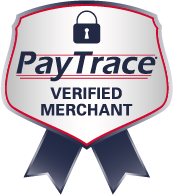By most measures, Twitter is the second-most prominent social network in the world. It is home to more than 500 million newly published tweets every day–an astounding body of content in its own right. Brands have recognized this opportunity, which virtually every major domestic and international brand managing their own Twitter accounts.
Understanding the need for Twitter is one thing–most businesses have been told many times that building a social presence is important. Using these platforms effectively is another matter, though. As social networks develop, they are also trying to distinguish themselves from their competition to create unique opportunities. This means that the best practices for each can be slightly different.
And on Twitter, question marks can abound. While Facebook’s revenue system (sponsored posts) and its primary usage (social engagement with friends and family) are obvious to marketers, Twitter’s platform is a bit more amorphous. Users engage the social network in many different ways, and Twitter itself sometimes seems unsure how to differentiate itself from competitors. Even so, Twitter offers a unique format that consumers love, even if they love it for different reasons.
So what does that mean for marketers? As is often the case, intuition can be misguided. Here are some data-backed tips for marketing on Twitter.
Forget SEO–Google Isn’t Indexing Your Tweets
On Twitter, each individual tweet has the ability to be indexed by Google and integrated into online search results. The problem? This almost never happens unless you are a major Twitter user. Recent research has found that of the 500 million daily tweets produced, only a fraction of a percent are ever indexed by Google. Those figures are slightly better if you have a Twitter following in the millions, but even then most of your tweets will never make it into Google searches.
For this reason, Twitter has no business being considered in your SEO strategy. The content you produce has plenty of value within the Twitter platform, but as a method of expanding your overall online visibility, it’s irrelevant.
Unlike Facebook, You Have to Post Frequently
Facebook best practices say you should limit your posting to a few times a day–beyond that, the content can get lost in News Feeds, and it may even annoy your followers.
No so on Twitter. Unlike Facebook’s News Feed, where a single post can enjoy prominence for hours–even days–Tweets are very disposable. Everything is published chronologically, which means the exposure of a single tweet will drop rapidly after about 20 minutes. To make sure users see your posts, you’ll need to post periodically throughout the day. It’s more time-intensive than other social networks, but it’s the only way to get consistent results.
Sponsored Tweets Don’t Offer Enough Value–Yet
Twitter has rolled out a Sponsored Tweet functionality where users can pay to reach new audiences through a paid tweet. For most businesses, though, there isn’t enough confirmed value to make this worth the expense. Major brands are already diving on to pay for this advertising, but those companies also have deep pockets and plenty of latitude in how they spend marketing dollars.
As more research about the efficacy of Sponsored Tweets comes out, they may prove to be more valuable to small and mid-sized businesses. Until then, it’s better to stick with the free promotional opportunities.
Remember the Rule of Three: A Link, a Mention, and a Hashtag
Visibility and engagement are key on Twitter. If you want to maximize your reach and interactions with other users, follow the Rule of Three. This principle is simple: Every tweet should include a link (offering useful information), a mention of a relevant Twitter user, and a hashtag to categorize the tweet.
By employing this strategy consistently, more users will see and respond to your tweets, and you will be able to build your following faster.
Contact DBC Digital today to get started on a better Twitter and social media strategy.
Greg Sherwood is CEO of DBC Digital, a marketing agency based in Denver, Colorado. With over 30 years of marketing experience with traditional and inbound (internet) marketing, Greg helps mid-sized businesses get a better return on their marketing dollars.
You can reach Greg at (303) 357-5757 or at dbc@dbcdigital.com





